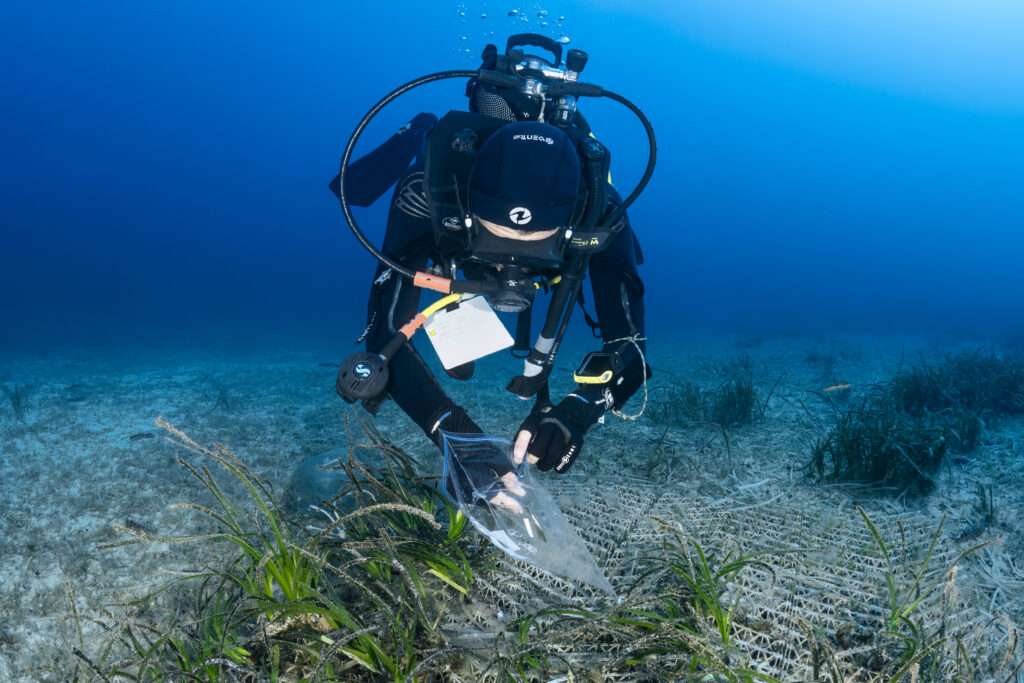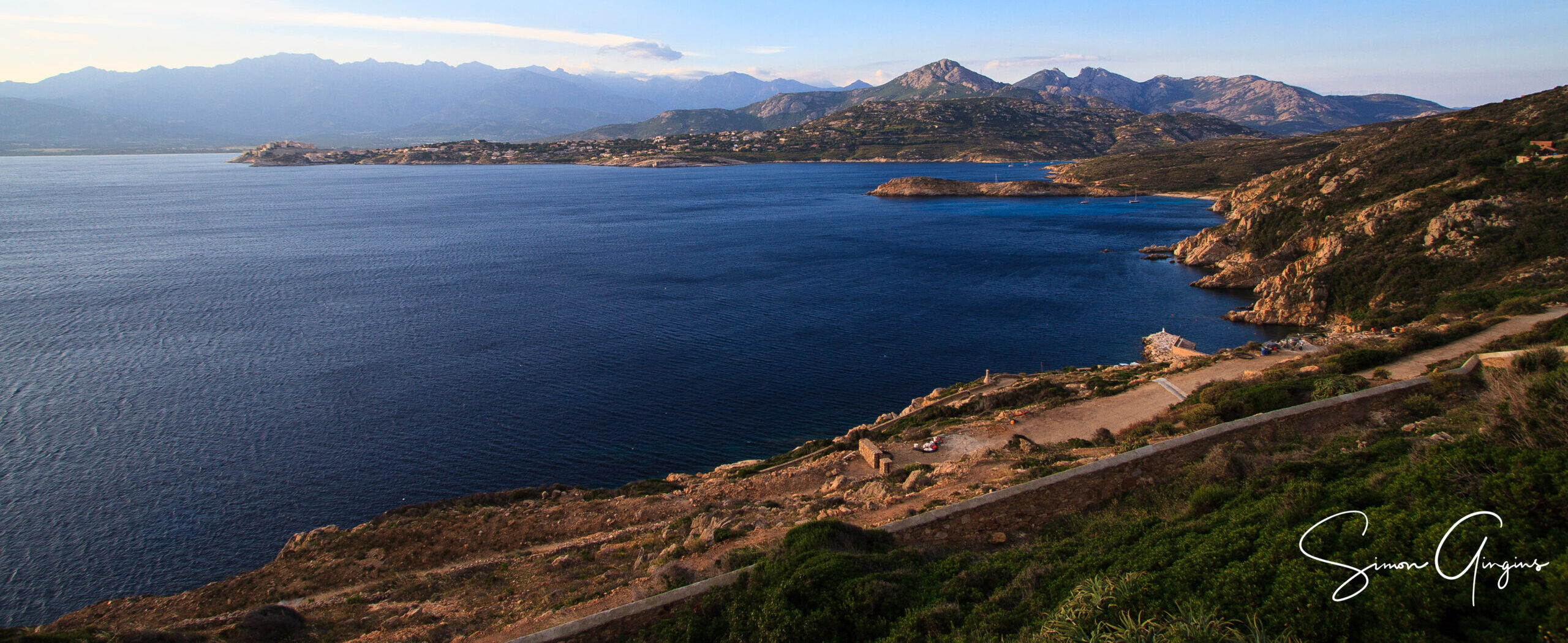
The Bay of Calvi, located in northwestern Corsica, is a reference site for the northwestern Mediterranean basin. Among the marine phanerogams species, this bay hosts Cymodocea nodosa meadows (69.9 ha), and extensive Posidonia oceanica meadows (419.4 ha) which extend from 3 m to 37 m in depth. Since the 1970s, the Laboratory of Biological Oceanography of the University of Liège and the STARESO marine station have been studying the ecology and dynamics of the seagrass meadows in this bay.
Context.
The Posidonia oceanica meadow in the Bay of Calvi is considered to be in good ecological status in areas not subject to anthropogenic pressures. However, some areas experience significant anthropogenic pressures, such as leisure boat anchoring, which can be particularly intense during the summer season. A monitoring program conducted between 2012 and 2018 revealed the significant impact of anchoring on P. oceanica meadows, with a regression of 8 ha in the Bay of Calvi.
Vision.
The Bay of Calvi, thanks to the privileged location of the STARESO marine station and the long-term (50 years) monitoring of Posidonia oceanica meadows, is an ideal site for testing and developing various restoration techniques. After several years of monitoring and validation of the most effective techniques, these methods can be scaled up for large-scale restoration efforts in the Bay of Calvi and extended to other areas in Corsica and the Mediterranean.

 Fabrice Dudenhofer
Fabrice DudenhoferThe REPAIR project on the restoration of anthropogenic patches in Posidonia oceanica meadows, led by the University of Liège and STARESO, was launched in 2021. The main objectives of this project are to:
(1) Test biodegradable substrates with different structural complexity to facilitate the anchoring of transplanting material and facilitate natural recolonization by drifting P. oceanica fragments;
(2) Compare the performance of transplants from different donor populations: fragments of P. oceanica rhizomes either harvested from meadows and fragments of unknown origin that are found drifting on the seafloor;
(3) transplanting at two different depths (20 and 28m), which is the bathymetric zone where important degradations resulting from anchoring in the study zone. The total area of this initial pilot project covers 108m².
Following the promising initial results of the REPAIR project, REPAIR 2.0 was launched in 2024 with the objective of testing a fourth biodegradable substrate for transplanting P. oceanica cuttings and enhance natural recolonisation of nearby seagrass meadows. Cuttings were transplanted onto gabions over a total restoration area of 20 m²
Contact
Location
STARESO, Punta Revellata,
20260, Calvi, France
